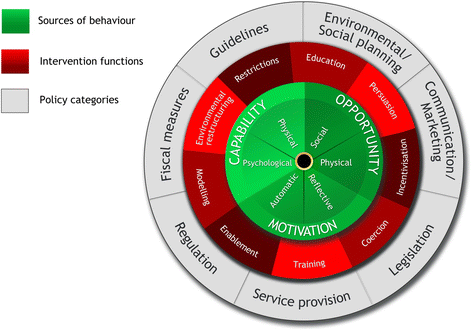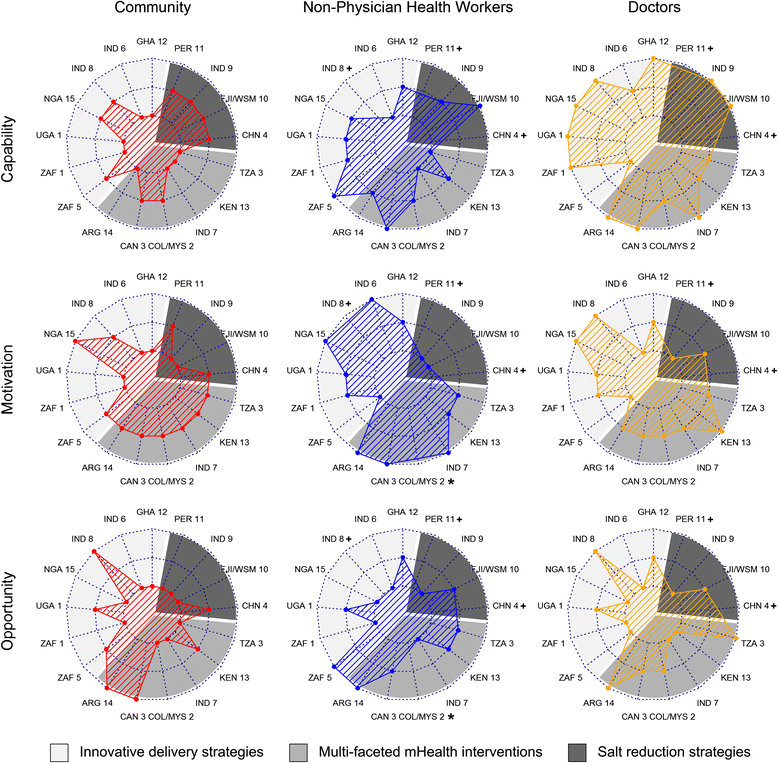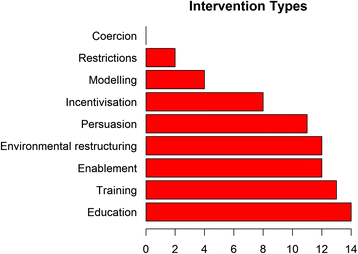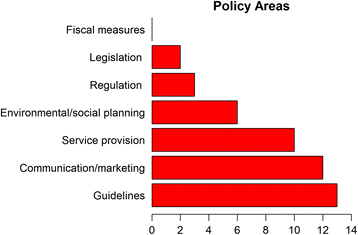Behaviour change strategies for reducing blood pressure-related disease burden: findings from a global implementation research programme
- PMID: 26553092
- PMCID: PMC4638103
- DOI: 10.1186/s13012-015-0331-0
Behaviour change strategies for reducing blood pressure-related disease burden: findings from a global implementation research programme
Abstract
Background: The Global Alliance for Chronic Diseases comprises the majority of the world's public research funding agencies. It is focussed on implementation research to tackle the burden of chronic diseases in low- and middle-income countries and amongst vulnerable populations in high-income countries. In its inaugural research call, 15 projects were funded, focussing on lowering blood pressure-related disease burden. In this study, we describe a reflexive mapping exercise to identify the behaviour change strategies undertaken in each of these projects.
Methods: Using the Behaviour Change Wheel framework, each team rated the capability, opportunity and motivation of the various actors who were integral to each project (e.g. community members, non-physician health workers and doctors in projects focussed on service delivery). Teams then mapped the interventions they were implementing and determined the principal policy categories in which those interventions were operating. Guidance was provided on the use of Behaviour Change Wheel to support consistency in responses across teams. Ratings were iteratively discussed and refined at several group meetings.
Results: There was marked variation in the perceived capabilities, opportunities and motivation of the various actors who were being targeted for behaviour change strategies. Despite this variation, there was a high degree of synergy in interventions functions with most teams utilising complex interventions involving education, training, enablement, environmental restructuring and persuasion oriented strategies. Similar policy categories were also targeted across teams particularly in the areas of guidelines, communication/marketing and service provision with few teams focussing on fiscal measures, regulation and legislation.
Conclusions: The large variation in preparedness to change behaviour amongst the principal actors across these projects suggests that the interventions themselves will be variably taken up, despite the similarity in approaches taken. The findings highlight the importance of contextual factors in driving success and failure of research programmes. Forthcoming outcome and process evaluations from each project will build on this exploratory work and provide a greater understanding of factors that might influence scale-up of intervention strategies.
Figures




References
-
- Lim SS, Vos T, Flaxman AD, Danaei G, Shibuya K, Adair-Rohani H, et al. A comparative risk assessment of burden of disease and injury attributable to 67 risk factors and risk factor clusters in 21 regions, 1990–2010: a systematic analysis for the Global Burden of Disease Study 2010. Lancet. 2012;380(9859):2224–60. doi: 10.1016/S0140-6736(12)61766-8. - DOI - PMC - PubMed
-
- World Health Organization. Global health risks : mortality and burden of disease attributable to selected major risks—Available at: http://apps.who.int/iris/handle/10665/44203#sthash.xTxwMmTK.dpuf. Geneva: World Health Organization; 2009.
Publication types
MeSH terms
Grants and funding
LinkOut - more resources
Full Text Sources
Other Literature Sources
Medical
Miscellaneous

